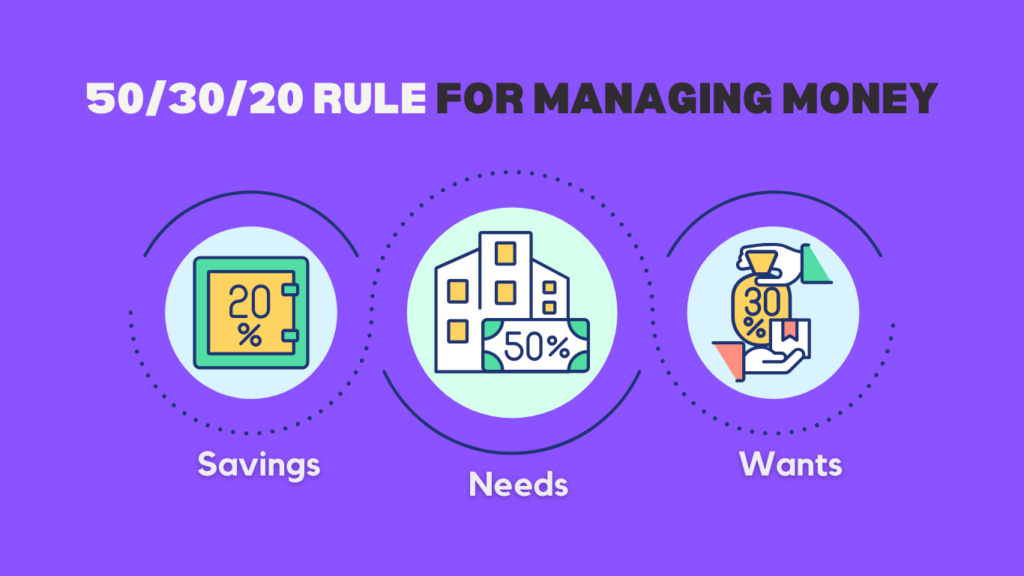- Home
- Personal Finance
- Understanding The 50/30/20 Rule Of Budgeting

In this blog, we’ll look at a popular and practical budgeting method known as the 50/30/20 rule, which is a basic yet strong foundation for streamlining your financial objectives and some benefits of budget control. Effective money management is essential for living a stable and successful life. A well-structured budget is essential for achieving both short-term financial security and long-term capital building.
Budgeting enables people to take charge of their finances, allocate resources sensibly, and make sound decisions about spending, saving, and investing. Understanding the importance of budgeting is the first step towards financial success and financial independence.
Budgeting is an organized process of developing, managing, and controlling a financial plan for a defined time. It involves evaluating income, outlining expenses, and allocating funds to different categories such as essentials, discretionary spending, savings, and debt repayment.
The basic objective of budgeting is to promote financial stability and achieve goals by providing a disciplined framework for money management. It enables people or organizations to make more educated financial decisions, track spending habits, and prioritize expenses. Ultimately, budgeting is a proactive tool for maintaining budgetary discipline, encouraging savings, and successfully navigating economic obstacles.
The 50/30/20 budget rule is a simple and successful budgeting method that aims to help people manage their finances in a balanced and sustainable manner. This rule is outlined in full in the book “The Investor’s Sutra” and divides your income into three categories: needs, wants, and savings.

Use 50% of your salary to pay essential expenses like rent, bills, groceries, and public transportation. Needs are non-negotiable expenses necessary for a basic and decent livelihood.
Wants account for 30% of discretionary spending on non-essential things or events, such as dining out, enjoyment, and purchases of luxury. This category provides economic freedom and enjoyment without compromising financial stability.
The remaining 20% is devoted to savings and debt repayment. This critical component of the regulation focuses on creating an emergency fund, contributing to retirement accounts, and addressing existing debts. It establishes the groundwork for financial stability and future planning.
The path to financial stability begins with understanding the art of budgeting. These steps for budgeting will teach you how to manage the complexities of the 50/30/20 budget rule, allowing you to distribute your income wisely and take control of your financial future. Let’s dive into the essential steps for budgeting with an example:
Begin by determining your overall monthly income. Include all sources of income, such as salary, freelance employment, and any other streams. Assume your total monthly revenue is Rs.50,000, derived from all sources.
Make a list of your “needs” expenses that are absolutely necessary and cannot be avoided. These may include rent or a loan, utilities, groceries, insurance, transportation, etc.
Your monthly salary is Rs.50,000, thus 50%, or Rs.25,000, will be set aside for needs. If your total fixed expenses are less than Rs.20,000, that is fine; but, if they exceed that amount, you should reduce your wants category or increase you monthly revenue.
Identify areas of discretionary spending that are classified as “wants.” This may comprise dining out, entertainment, other interests, and non-essential spending. Be realistic about the difference between a wish and a need.
Considering your monthly pay of Rs.50,000, assign Rs.15,000 to the wants category which is 30% of the salary. This should not exceed the allocated amount.
Set aside a considerable amount of your salary (20%) for savings and debt repayment. This involves making contributions to your emergency fund, and retirement savings, and actively paying off outstanding debts.
Here, your monthly salary is Rs.50,000, therefore 20% of that is Rs.10,000, which should be utilized to pay off debt or put aside for savings.
Use tools for budgeting or applications to keep track of your income and expenses. Set particular restrictions for each category to ensure that you stay within the allowed percentages. Regularly compare your spending to the budget to identify opportunities for improvement and make adjustments accordingly.
Understanding the art of budget control is more than just calculating numbers; it is a strong skill that unlocks an endless number of financial benefits. We already know about budgeting, so it is essential to understand the benefits of budget control so that we can apply it to our finances:

Finally, following the 50/30/20 budget rule guideline goes beyond simple financial management; it opens the door to a world of empowerment and stability. As we’ve looked at the benefits of budget control, from reaching financial independence to lowering stress and promoting debt payback, one thing has been clear: disciplined financial planning changes people’s lives.
Feel free to ask about your queries or questions.
© 2024 – Finshala. All Rights Reserved

5 Steps to Reduce Credit Card Debt: Master Your Finances
[…] credit card debt. Understanding the credit card validity period, credit card eligibility, making a realistic budget, avoiding credit card penalty charges, and studying consolidation options will help you achieve […]
Financial Stability: 5 Tips For Bridging Income Expense Gap
[…] a realistic budget is an important step in managing your finances. In your income expense tracker, allocate specified […]